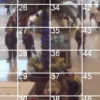Free Online Productivity Tools
i2Speak
i2Symbol
i2OCR
iTex2Img
iWeb2Print
iWeb2Shot
i2Type
iPdf2Split
iPdf2Merge
i2Bopomofo
i2Arabic
i2Style
i2Image
i2PDF
iLatex2Rtf
Sci2ools
Publication
Feature Mining for Localised Crowd Counting
This paper presents a multi-output regression model for crowd counting in public scenes. Existing counting by regression methods either learn a single model for global counting, or train a large number of separate regressors for localised density estimation. In contrast, our single regression model based approach is able to estimate people count in spatially localised regions and is more scalable without the need for training a large number of regressors proportional to the number of local regions. In particular, the proposed model automatically learns the functional mapping between interdependent low-level features and multi-dimensional structured outputs. The model is able to discover the inherent importance of different features for people counting at different spatial locations. Extensive evaluations on an existing crowd analysis benchmark dataset and a new more challenging dataset demonstrate the effectiveness of our approach.
| Added | 22 Jul 2012 |
| Updated | 22 Jul 2012 |
| Type | Conference |
| Year | 2012 |
| Where | BMVC |
| Authors | Ke Chen, Chen Change Loy, Shaogang Gong, Tao Xiang |
Comments (0)






